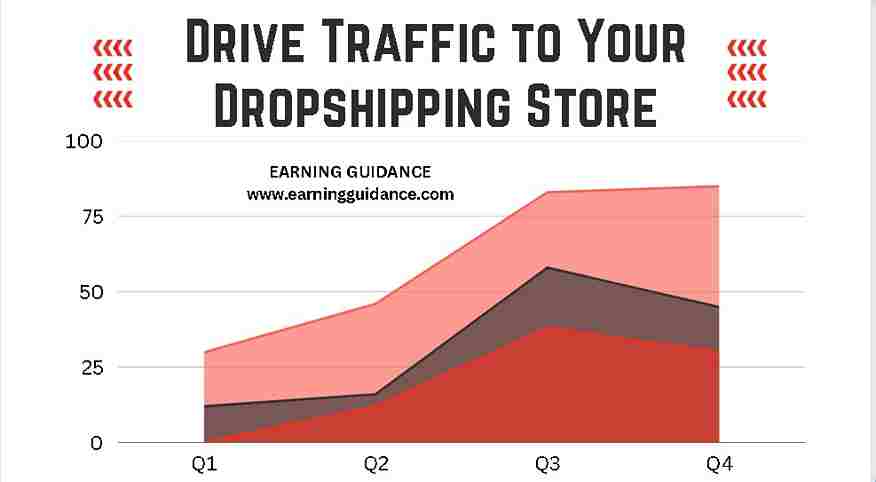Table Of Contents
- 1 Dropshipping vs. Traditional Retail: Pros and Cons
- 1.1 Introduction to Dropshipping vs. Traditional Retail
- 1.2 Definition of Dropshipping and Traditional Retail
- 1.3 Pros of Dropshipping
- 1.4 Cons of Dropshipping
- 1.5 Pros of Traditional Retail
- 1.6 Cons of Traditional Retail
- 1.7 Comparison and Analysis
- 1.8 Case Studies and Success Stories
- 1.9 FAQ
- 1.10 Conclusion
Dropshipping vs. Traditional Retail: Pros and Cons
Understanding the best business model for your venture
Introduction to Dropshipping vs. Traditional Retail
In the ever-evolving world of commerce, entrepreneurs are faced with a crucial decision: dropshipping or traditional retail? This article aims to explore the pros and cons of each model, helping you make an informed decision for your business. By understanding the unique aspects of dropshipping and traditional retail, you can determine which approach aligns better with your goals and resources.
How to Start a Profitable Dropshipping Business from Scratch
Definition of Dropshipping and Traditional Retail
Dropshipping and traditional retail are two distinct business models with their own characteristics:
Dropshipping is an e-commerce method where the retailer doesn’t keep products in stock. Instead, they partner with suppliers who directly ship the products to customers. The retailer acts as a middleman, handling marketing, customer service, and order management.
Traditional retail refers to the brick-and-mortar approach, where retailers purchase inventory, manage storage, and handle fulfillment in physical stores. Customers visit the store to make purchases, and the retailer is responsible for inventory management, customer experience, and marketing efforts.
10 Mistakes to Avoid as a New Blogger
Pros of Dropshipping
Dropshipping offers several advantages that make it an attractive option for many entrepreneurs:
- Low startup costs and minimal financial risk: With no need to invest in inventory upfront, entrepreneurs can start a dropshipping business with limited funds.
- No need to hold inventory or manage fulfillment: Dropshippers can focus on marketing and customer acquisition without worrying about inventory storage or shipping logistics.
- Flexibility and scalability: Dropshipping allows entrepreneurs to easily add or remove products from their store and expand to new markets with minimal constraints.
- Access to a wide range of products and suppliers: Dropshipping provides access to an extensive network of suppliers, allowing entrepreneurs to offer a diverse range of products to their customers.
- Location independence and ease of entry: With an online store, dropshipping allows entrepreneurs to operate their business from anywhere with an internet connection, offering freedom and flexibility10 Essential Dropshipping Tips for Beginners.
Cons of Dropshipping
While dropshipping has its benefits, it also presents some challenges:
- Lower profit margins compared to traditional retail: Due to the competitive nature of dropshipping and the lack of control over pricing, profit margins tend to be lower.
- Less control over product quality, shipping, and fulfillment: Dropshippers rely on suppliers to fulfill orders, which can lead to potential quality issues and longer shipping times.
- Potential for increased competition and market saturation: As dropshipping continues to grow in popularity, the market can become saturated, making it harder to stand out among competitors.
- Dependency on suppliers and their reliability: Dropshippers rely on suppliers for product availability, stock management, and timely fulfillment, which can impact the overall customer experience.
- Limited branding and customization options: Dropshippers have limited control over branding and customization, as products are shipped directly from the suppliers[^1^].
Pros of Traditional Retail
Traditional retail also has its advantages, which make it a viable option for many businesses:
- Greater control over product quality, branding, and customer experience: Traditional retail allows retailers to have full control over product quality, store layout, branding, and the overall customer experience.
- Ability to build personal relationships with customers: Physical stores provide opportunities to interact directly with customers, fostering personal connections and building trust.
- Higher profit margins, especially with exclusive or unique products: Retailers who offer exclusive or unique products often enjoy higher profit margins compared to dropshippers.
- Immediate fulfillment and the ability to offer in-store experiences: Traditional retail allows customers to purchase products immediately and experience in-store services and demonstrations.
- Opportunities for local community engagement and partnerships: Physical stores can actively engage with the local community through events, sponsorships, and collaborations[^2^].
Cons of Traditional Retail
While traditional retail has its merits, it also faces certain challenges:
- High startup costs, including inventory and storefront expenses: Opening a physical store requires significant upfront investment in inventory, rent, utilities, and store design.
- Greater financial risk and the need to manage inventory: Retailers bear the financial risk of purchasing and storing inventory, which can tie up capital and increase the risk of unsold stock.
- Limited geographic reach compared to online businesses: Physical stores have a restricted customer base compared to online businesses that can reach customers globally.
- Less flexibility and scalability: Traditional retail may face limitations in scaling the business due to the need for physical expansion and the associated costs.
- Challenges of staying competitive in the digital age: Traditional retailers must adapt to changing consumer preferences and invest in digital strategies to compete with online retailers[^2^].
Comparison and Analysis
To make an informed decision between dropshipping and traditional retail, it’s essential to analyze their key differences:
- Business Model: Dropshipping is an online, inventory-free model, while traditional retail relies on physical stores and inventory management.
- Startup Costs: Dropshipping has lower upfront costs, while traditional retail requires significant capital investment.
- Profit Margins: Traditional retail generally offers higher profit margins, particularly with exclusive products, while dropshipping may have lower margins due to pricing competition.
- Control and Customization: Dropshipping provides less control and customization options compared to traditional retail.
- Scalability: Dropshipping offers more flexibility and scalability due to its online nature, while traditional retail expansion often requires physical store openings.
- Customer Experience: Traditional retail can offer a unique in-store experience, personal interaction, and immediate fulfillment, while dropshipping focuses on online convenience and accessibility.
Harnessing the Power of Social Media to Promote Your Blog
The choice between dropshipping and traditional retail depends on various factors such as target market, product type, budget, and personal preferences. Assessing these factors will help determine which model aligns best with your business goals.
Case Studies and Success Stories
To gain further insights, let’s explore some real-life examples:
- Case Study 1: Dollar Shave Club disrupted the traditional retail model by offering a subscription-based, online shaving product business that eliminated the need for physical stores.
- Case Study 2: Apple successfully combines traditional retail stores with online sales, providing a unique customer experience and leveraging their brand strength.
- Case Study 3: Nasty Gal started as an online dropshipping store, showcasing the potential for growth and success in the e-commerce landscape.
Studying these cases will provide valuable insights and lessons that can inform your decision-making process.
FAQ
Let’s address some common questions related to dropshipping and traditional retail:
Q1. What are the main differences between dropshipping and traditional retail? The main differences lie in inventory management, fulfillment processes, startup costs, and control over the customer experience.
Q2. Which model offers higher profit margins? Traditional retail generally offers higher profit margins, especially with unique or exclusive products. Dropshipping tends to have lower margins due to pricing competition.
Q3. What are the startup costs involved in dropshipping and traditional retail? Dropshipping has lower startup costs since it doesn’t require upfront inventory investment or physical store expenses. Traditional retail involves significant capital for inventory, rent, and store setup.
Q4. Which model is more suitable for small businesses? Dropshipping is often more accessible for small businesses due to its lower startup costs, scalability, and location independence. Traditional retail may require more resources and investment.
Q5. How can I choose between dropshipping and traditional retail for my business? Consider your product type, target market, budget, scalability needs, and personal preferences. Evaluate the pros and cons of each model in relation to your business goals.
The Ultimate Guide to Dropshipping: Everything You Need to Know
Conclusion
Understanding the pros and cons of dropshipping and traditional retail is crucial for making an informed decision. Consider the unique aspects of each model and align them with your business goals, resources, and target market. Whether you choose dropshipping or traditional retail, success lies in adapting your strategy, providing exceptional customer experiences, and continually innovating in a rapidly changing market. Take the time to evaluate your options and make the choice that best suits your entrepreneurial journey.













One thought on “Dropshipping vs. Traditional Retail: Pros & Cons”